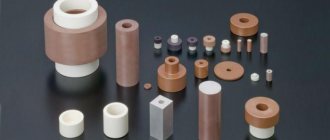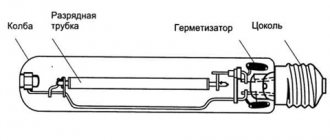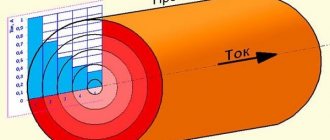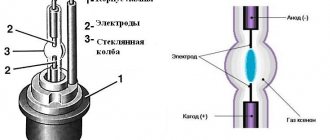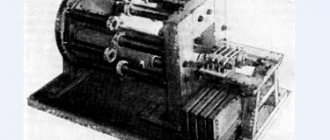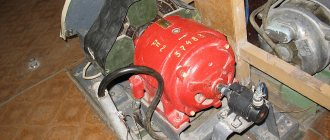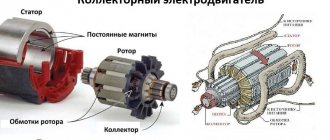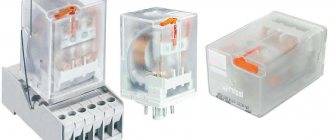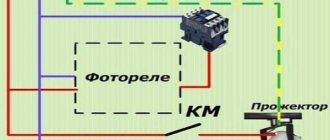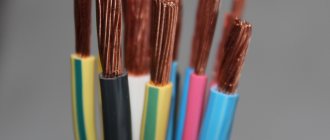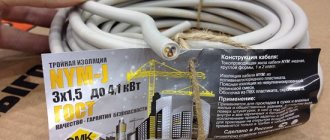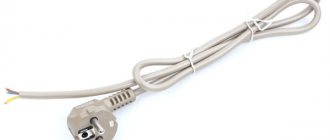Any electrical equipment, including generators, power plants and switchgear, consists of live parts. For reliable and safe operation, the latter must be protected from each other and from the influence of surrounding components. Electrical insulating materials are used for these purposes.
It is important that the winding on the armature is separated from its core, the excitation coil from a similar part, poles and frame of the unit. Materials that are used to insulate something from electrical current are called dielectrics. It is worth noting that such products come in two types - some do not pass current at all, others - although they do this, but in tiny quantities.
When creating such materials, organic and inorganic elements are used, along with various additives necessary for impregnation and gluing. Recently, liquid insulation for wires, often used in switches and transformers (for example, transformer oil), has been gaining widespread popularity. No less often, gaseous dielectrics, including ordinary air, are used in electrical equipment.
Electrical insulating materials and areas of their application
The main areas of application of electrical insulating materials include various industrial branches, radio engineering, instrument making and installation of electrical networks. Dielectrics are the main elements on which the safety and stability of any electrical appliance depends. The quality and functionality of insulation is influenced by various parameters.
Thus, the main reason for using electrical insulation is to comply with safety regulations. In accordance with them, it is strictly prohibited to operate equipment with partially or completely missing insulation or damaged shell, since even small currents can harm the human body.
Alumina ceramics
Very similar in appearance to porcelain, only better.
Contains almost pure Al2O3. It is described in more detail in this article. Hard, durable ceramics from which:
Chip housings, usually for critical applications.
Processor cases used to be made of ceramic, but increased heat generation and price competition forced them to abandon this material. It was with the ceramic housing of the processors that the joke about the new Russian and the tiles in the bathroom from Intel was connected.
Housings of electrovacuum devices.
The housing of the magnetron vacuum flask is made of copper and aluminum oxide ceramics. The ceramics are visible in the photo, there is a purple band between the cap and the body.
Aluminum oxide ceramics are very hard and, like many ceramics, are processed with diamond tools. A piece of a ceramic chip casing is an excellent tool for writing messages on a car windshield; it leaves clear, even scratches no worse than a glass cutter.
This type of ceramic is dense, does not absorb moisture, holds a vacuum, and does not crack due to sudden temperature changes and thermal shock. At the same time, the adhesion of metal films to the surface is high, making it possible to make tracks on ceramics and hermetically weld metal parts.
Properties of dielectrics
In order to guarantee the performance of important functions, electrical insulating products must have the necessary properties. The main difference between a dielectric and a conductor is a much higher resistivity (100-1100 Ohm*cm). On the other hand, their electrical conductivity is 14-15 times lower than the current-carrying conductors. This is due to the natural origin of insulating materials, which contain much less free negative electrons and positively charged ions that affect current conductivity.
Important! Despite the last statement, when any dielectric is heated, the number of ions and electrons increases significantly, which increases electrical conductivity and creates a risk of electric shock.
All properties of dielectrics can be divided into two main groups - active and passive, with the second being the most important. Passive is the dielectric constant: the lower its value, the more reliable and high-quality the insulator is, since it does not have a negative effect on the electrical circuit and does not add parasitic capacitances. On the other hand, if the product is used as a dielectric capacitor, then the permeability should be as high as possible (stray capacitances are important in this case).
Mica
Mica.
Natural layered material, has heat resistance, strength, and is an excellent dielectric. Micas are a large class of layered minerals, of which muscovite and sometimes biotite and phlogopite are used in technology.
In English, mica is Mica, hence the derivative names of materials based on mica - micanites, micalenta, micafolium, micalex, etc.
Mica extracted from the mine is disassembled and sorted. Large pieces are manually split into plates - this is how plucked mica
- transparent homogeneous plates.
This mica is of the highest quality and is used for critical applications - in vacuum technology, radiation input/output windows, etc. Unfortunately, large, uniform pieces of mica without defects are rare, so mica plates of different shapes are glued together to form micanite
.
If you use fabric (fiberglass, paper) as a substrate for gluing mica plates, you get mica tape, micafolium, steklomicanite
.
Very fine mica waste is ground up and cast into a mesh in the form of an aqueous pulp, just like paper. After removing the water, the mica particles stick together into a single sheet - mica paper (mica, mica-plastic)
.
The resulting fabric can be impregnated with an organic binder for strength. The flexibility of mica paper allows it to be wound as insulation. You can also get rods and tubes by winding. If mica is impregnated with molten glass, the resulting durable material is called micalex
.
Mica, ground into dust, is a component of pigments and, due to its “scale”, gives a pearlescent effect. Biotite is mainly used in pigments.
Synthetic material - fluorphlogopite (synthetic mica) is mica (phlogopite) where -OH groups are replaced by fluorine. Fluorphlogopite is more durable and thermally resistant, it also looks like mica, also layered but absolutely transparent/white, and not yellowish like natural mica. Alas, I haven’t encountered this material in person yet.
Application examples
Structural elements for holding heating elements in hair dryers, heaters, fan heaters, soldering irons, etc.
Heaters for household fan heaters. The design on the left is less material-intensive, but much less reliable, especially under mechanical loads.
As a protective window for the output of microwave radiation from the magnetron in microwave ovens. (usually food that gets on mica is charred and, becoming a conductor, begins to spark violently, causing microwave owners to throw away the microwave in fear, although it is enough to cut it out of the mica sheet and replace the window.)
Mica microwave output window.
Due to the fact that thin mica plates do not allow gases to pass through, but energetic charged particles do, mica windows are used in the designs of alpha and beta particle counters.
Used in radio tube designs - it holds the electrodes in place.
The octagonal plate is made of mica.
Used as a material for mica capacitors. Mica acts as a dielectric, and electrodes are conductive metal deposits on mica plates. This type of capacitor is becoming less and less common, replaced by capacitors based on polymer films. Mica capacitors can operate at high temperatures.
Mica capacitors made in the USSR half a century ago.
Mica plates in a capacitor. Metallization on the plates forms the linings.
Before the advent and widespread use of thermally conductive insulating gaskets made of polymer materials, such as Nomacon, mica plates were used for electrical insulation of components while maintaining thermal contact, for example, when it was necessary to attach several transistors, the housings of which were under different voltages, to one radiator.
Plates of natural plucked mica.
Interesting facts about mica
Previously, several centuries ago, when they did not know how to make thin window glass, translucent structures were made by splitting natural mica. Since large pieces of mica without defects were rare, the windows also took on a bizarre shape.
Natural mica is transparent. Mica materials obtained by processing natural mica are usually opaque.
Window with mica inserts from the exhibition of the Krasnoyarsk Museum of Local Lore
Mica is a fairly soft material; a mica plate (like most materials based on it) can be easily cut with scissors. Due to its layered nature, gluing mica is an unreliable task, the adhesion force between layers is low, therefore, during production, mica parts are mechanically fastened - rivets, eyelets, screws, etc.
Electrical connections to the heating element are made with hollow rivets.
Isolation Options
The main ones include:
- electrical strength;
- electrical resistivity;
- relative permeability;
- dielectric loss angle.
When assessing the quality and efficiency of dielectrics, and comparing their properties, it is necessary to identify the dependence of the listed parameters on the values of current and voltage. Compared to conductors, electrical insulating components have increased electrical strength. Considering the above, no less important is how well the insulators retain their useful properties and specific values when heated, increased voltage and other influences.
Coulomb's Law and Electric Potential
In addition to its connection with the speed of light, the electric constant appears in other important laws of electrodynamics. These include, for example:
- Coulomb's Law:
- Electric potential of a charged particle: φ (r) = q / 4 * π * ε0 * r .
In particular, Coulomb's law is the basis of electrostatics, so the electric field constant is also of great importance.
Classification of dielectric materials
The choice of one or another insulating material depends on the power of the current flowing through the equipment conductors. There are several criteria for classifying dielectrics, but the two most important are their state of aggregation and origin. To insulate the cords of household electrical appliances, solid insulators, transformers and other high-power equipment - liquid and gaseous - are used.
Classification by state of aggregation
Based on their state of aggregation, there are three types of dielectric materials: solid, liquid and gaseous.
Solid dielectrics
Electrical insulating materials of this type are considered the most common and popular; they are used in almost all areas where there is equipment with live parts. Their quality depends on certain chemical properties, while the dielectric constant can be completely different - 10-50,000 (dimensionless value).
Solid insulators are polar, non-polar and ferroelectric. The main difference between the three varieties is the principle of polarization. The main properties of these materials are chemical resistance, tracking resistance and dendrite resistance. The ability of a dielectric to withstand the effects of an aggressive environment - acids, alkalis, active liquids - depends on chemical resistance. Tracking resistance affects protection from an electric arc, dendrite resistance affects the appearance of dendrites.
Ceramic insulators are used as linear and feed-through dielectrics in substations. Textolites, polymers and paper products can be used to protect household electrical appliances, and varnishes, cardboard and various compounds can be used to protect industrial equipment.
By combining several different materials, dielectric manufacturers manage to obtain special properties of the product. This increases resistance to heat, moisture, extremely low temperatures and even radiation.
The presence of heat resistance indicates that the insulator is able to withstand high temperatures, but in each individual case the maximum level will be different (it can reach 200 and 700 degrees Celsius). These include fiberglass, organosilicate and some polymer materials. Fluoroplastic dielectrics are resistant to moisture and can be used in the tropics. In general, fluoroplastic is not only hydrophobic, but also non-hygroscopic.
If atomic elements are included in electrical equipment, it is important to use insulation that is resistant to radioactive background. Inorganic films, some polymers, fiberglass laminates and various mica products come to the rescue.
Frost-resistant dielectrics include components that retain their specific properties at temperatures down to -90 degrees. Celsius. Finally, in electrical devices operated in space, insulating materials with increased vacuum density (for example, ceramics) are used.
Liquid dielectrics
Dielectrics in a similar state of aggregation are often used in industrial electrical equipment. The most obvious example is transformers, which require special oil to operate safely. Liquid dielectrics include liquefied gas, paraffin or vaseline oil, sprays, distilled water, which has been purified from salts and other impurities.
Liquid electrical insulating materials are described by the following technical and operational characteristics:
- the dielectric constant;
- electrical strength;
- electrical conductivity.
The magnitude of the physical parameters of liquid dielectrics depends on the degree of their purity (contamination). The presence of solid impurities in water or oil leads to a significant increase in electrical conductivity, which is associated with an increase in the number of free electrons and ions. Liquids are purified using a variety of methods, ranging from distillation to ion exchange. After performing this process, the electrical strength of the material increases and its electrical conductivity decreases.
Liquid electrical insulators can be divided into three main groups:
- Transformer, capacitor and cable oils are made from oil.
- Synthetic fluids are actively used in industrial instrument making. These include compounds based on fluorine and organosilicon. Organosilicon materials can withstand severe frosts; they are hygroscopic, so they can be used in small transformers. On the other hand, the cost of such compounds is much higher than that of petroleum oils.
- Plant liquids are extremely rarely used in the manufacture of electrical insulation. We are talking about castor, flaxseed, hemp and other oils. All of the listed substances are considered weakly polar dielectrics, and therefore can only be used for impregnating paper capacitors or for forming a film in electrical insulating varnishes and paints.
Gaseous dielectrics
The most popular gaseous dielectrics are electrical gas, nitrogen, hydrogen and air. All of them can be divided into two categories - natural and artificial. The first includes air, which is often used as a dielectric to protect live parts of electrical transmission lines and machines.
Along with its advantages, air has disadvantages, which makes it unsuitable for use in sealed equipment. Since it contains a high content of oxygen, this gas is an oxidizing agent, therefore, in a non-uniform field, the electrical strength is significantly reduced.
Nitrogen is an excellent option for insulating power transformers and high-voltage power lines. In addition to its good insulating properties, hydrogen is capable of forcibly cooling equipment, which is why it is often used in high-power electric machines. For sealed installations, electrical gas is suitable, the use of which reduces the risk of explosion of any units. Electrical gas is often used in high-voltage circuit breakers due to its ability to extinguish an electric arc.
Classification by origin
Based on their origin, dielectrics are divided into organic and inorganic.
Organic dielectrics
Organic electrical insulating products can be divided into natural and synthetic. All materials belonging to the first category have recently been practically not used, which is associated with an increase in the production capacity of synthetic dielectrics, the cost of which is much lower.
Natural dielectrics are vegetable oils, paraffin, cellulose and rubber. Synthetic materials include various types of plastics and elastomers used in household appliances and other electrical equipment.
Inorganic dielectrics
Inorganic electrical insulating materials can be natural or artificial. Among the components of natural origin, mica can be distinguished with great resistance to chemically active substances and high temperatures. No less popular are muscovite and phlogopite.
Artificial dielectrics - glass in pure or diluted forms, porcelain and ceramics. Materials in this category are often given special properties by adding various components to their composition. If the insulator is a feed-through insulator, then it is necessary to use feldspathic ceramics with a large dielectric loss tangent.
Fibrous electrical insulating materials
Fiber dielectrics are used to protect various equipment. These include rubber, cellulose, various fabrics, nylon and nylon products, polystyrene and polyamide.
Organic fiber dielectrics are highly hygroscopic, so they are almost never used without special impregnation. In recent years, instead of organic insulators, synthetic fiber products with pronounced heat resistance have been used.
As an example, we can highlight glass fibers and asbestos: the former are impregnated with varnishes and resins that improve hydrophobicity, the latter are characterized by minimal strength, so cotton elements are added to their composition. We are talking about materials that do not melt when heated.
Porcelain
Porcelain
is a dense, durable ceramic produced by firing a mixture of kaolin, quartz, feldspar and clay. Similar to the porcelain cup in your kitchen, only less often covered with glaze.
Application examples
High temperature insulators.
In the form of porcelain beads to insulate the ends of heating coils. The scale-like design allows for bending without exposing the conductor.
Housing of a mercury arc lamp from a light beam oscilloscope. The frame is made of aluminum alloy, the black body is carbolite, porcelain beads insulate the conductors that connect the lamp. The lamp gets very hot during operation. A bunch of porcelain beads from various heaters.
Spark plugs from an internal combustion engine. The central electrode is insulated with porcelain. No other dielectric is capable of withstanding prolonged exposure to temperature, pressure, and fuel inside the combustion chamber.
Electrical parts.
If you look inside the lamp socket, the part that contains the connection lamellas is most likely made of porcelain; it can work for a long time at the elevated temperature of an incandescent lamp without losing its properties. Fuse housings, sockets, lamp contact holders - wherever there is a danger of heating, porcelain has no competition.
The socket and socket slat holders are made of porcelain. The black body of the cartridges is carbolite.
Powerful resistors have a porcelain tube base. The green resistor has a winding hidden under the enamel.
Insulators on poles.
The photo shows an insulator from a pole that was removed during the reconstruction of the line. 30 years of sun, wind, bird droppings, rains, frosts did not affect the porcelain at all, it still looks like new, it was enough to wash the insulator with soap.
Porcelain power line insulators. Between the porcelain insulator and the steel hook there is a polyethylene sleeve to protect the porcelain from cracks. The disk shape of the insulators allows water to drain without forming a continuous layer that closes the conductor to the support.
Flaws
Brittle, like all ceramics. A tightened screw, a blow, and the porcelain crumbles.
Heat resistance classes of electrical insulating materials
The heat resistance class of dielectrics is indicated by a letter of the Latin alphabet. We list the main ones:
- Y – maximum temperature 90 degrees. Celsius. This category includes various fiber products made from cotton, natural fabrics and cellulose. They are not impregnated or supplemented with liquid electrical insulators.
- A – 105 deg. Celsius. All materials listed above and synthetic silk are impregnated with liquid dielectrics (immersed in them).
- E – 120 degrees. Celsius. Synthetic products including fibres, films and compounds.
- B – 130 degrees. Celsius. Mica dielectrics, asbestos and fiberglass, coupled with an organic binder and impregnation.
- F – 155 degrees. Celsius. Mica materials, the connecting link of which is synthetic components.
- H – 180 deg. Celsius. Mica dielectrics with organosilicon compounds acting as a binder.
- C – more than 180 degrees. Celsius. All products listed above that do not use a binder or use inorganic adhesives.
The choice of electrical insulating materials depends not only on the capacity of the equipment, but also on its operating conditions. For example, for high-voltage power lines, dielectrics with increased frost resistance and protection from ultraviolet rays must be used.
Therefore, the information above should be used for informational purposes only and the final decision should be made by a professional, qualified professional.
Glass
Depending on the requirements, different types of glass can be used, from low-melting sodium glass to high-melting quartz glass. The main advantage of glass, in addition to its heat resistance, is its transparency for visible light (and quartz is also transparent for ultraviolet light). Another important plus is the ability to visually assess the integrity; cracks are usually visible.
Application examples
Housings for radio tubes, lighting lamps, fuses. Quartz tubes - housings of heaters, electric grills.
Glass and porcelain power line insulator that has worked outdoors for over 30 years.
Flaws.
Fragile, cannot withstand impacts.
Some types of glass crack when exposed to sudden, uneven heating. A typical feature (but not obligatory!) of quartz glass is a large number of streaks in the direction of glass extrusion.
Interesting facts about glass
Here it is worth mentioning additionally about sapphire glass, tempered glass and chemically tempered glass. In advertising descriptions of many electronic devices for mass consumption, you can find references to these types of glass.
- Sapphire glass
is not formally glass (it is not amorphous like glass, but crystalline), but due to its external similarity it is called that. Sapphire glass is thin plates of leucosapphire (pure Al2O3 - aluminum oxide). Leucosapphire is harder than ordinary glass, therefore it is used to protect optics from dust, abrasion by grains of sand in military equipment, and in expensive household devices. The glass of a sapphire wristwatch will remain scratch-free longer. At the same time, it is difficult to obtain large-sized sapphire crystals at a reasonable price, so we will not see tablets with sapphire crystal soon. - Strained glass.
Glass resists compression well and poorly against tension. You can increase the mechanical strength of glass by tempering it - the glass is heated to high temperatures and cooled sharply and evenly. As a result, mechanical stresses are formed in the glass, which increase mechanical strength. Most often, glass is tempered for safety. Ordinary glass, if thrown with a stone, breaks into several fairly large fragments, which can cause serious injury. When broken, tempered glass produces many small fragments, which are much safer. Therefore, all glass in cars, in shopping centers, and glass furniture shelves are tempered. A product made of tempered glass cannot be processed; if you try to trim a glass shelf for a bathroom, it will crumble into crumbs with a pop, so tempering is carried out after processing. A demonstration of the properties of tempered glass are Batavian tears. - Chemically tempered glass.
For example, the often mentioned Gorilla glass. For thin glass plates, the thermal tempering method is not suitable, so the glass plates are processed in a solution that, for example, replaces the sodium ion with a potassium ion. Since the potassium ion is larger, the surface layers of the glass seem to be “bursted” with larger atoms in the lattice, creating just the required mechanical stresses. As a result, this glass is stronger and more resistant to scratches.
